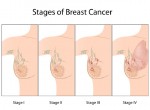Over the last several decades, medical research has discovered treatments for HIV and AIDS that have resulted in longer lives for infected individuals. There is no cure for HIV or AIDS, but it is possible for someone who is infected to live a full life for several years after contracting the virus. Treatments are able to reduce the amount of the virus in your body, so cells have a better chance of survival and your immune system remains strong. When a person is diagnosed with AIDS, he or she works with a doctor to develop a treatment plan based on the stage of the disease, the desire to treat the disease, and the patients overall health.
HIV and AIDS Medications
There are a number of medications available for treating HIV and AIDS. In addition to reducing the virus, they also boost immunity and help to manage complications. Categories of medications include:
Protease Inhibitors (PI)
Nucleoside Reverse Transcriptase Inhibitors (NRTI)
Fusion Inhibitors
Highly Active Antiretroviral Therapy (HAART)
Non-Nucleoside Reverse Transcriptase Inhibitors (NNRTI)
These medications might be prescribed individually or together. Each category of medication is intended to treat something different. For instance NRTIs are used to prevent HIV from duplicating and spreading throughout the body. There are more than half a dozen NRTIs approved for use and some patients take a combination of the drugs. Unfortunately, NRTIs might trigger side effects, including loss of appetite, nausea, vomiting, stomach cramps, headaches, respiratory symptoms, bloating, insomnia, fatigue, and oral ulcers. For some, side effects are more serious and include peripheral neuropathy, burning, pancreatitis, lung infection, and liver or kidney failure.
Protease inhibitors are also used to prevent the duplication of the virus, but it is more effective during the later stages of the virus. There are currently eight PIs approved for use and like NRTIs, they trigger a variety of side effects. In addition to those listed above, PIs might also trigger joint pain, high blood sugar and diabetes, kidney stones, drowsiness, abnormal thinking, changes in body fat, and digestive distress. Additionally, some of these medications are known to interact with others, so a doctor will need to carefully evaluate a patients medical issues and determine which treatments are the biggest priorities.
Fusion Inhibitors are new medications that prevent replication. There is only one fusion inhibitor currently approved for use. HAART is a combination of anti-retroviral medications and protease inhibitors. It is often referred to as an anti-HIV cocktail. Finally, NNRTI block HIV from infecting cells in the body. There are three currently approved for use and they are typically prescribed with anti-retroviral medications.
Other HIV and AIDS Treatments
In addition to drug therapy, patients diagnosed with HIV are encouraged to carefully monitor their health. Since the disease targets the immune system, the goal of treatment is to keep immunity strong. Anything a person can do, be it lifestyle changes or medication, to improve immunity helps prevent complications caused by HIV and AIDS. Doctors typically include suggestions for healthy living as part of a treatment plan. Suggestions might include eating healthy, whole foods, exercising when possible, and avoiding high-risk situations.














